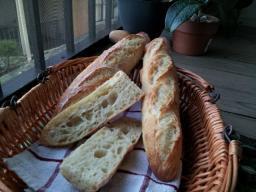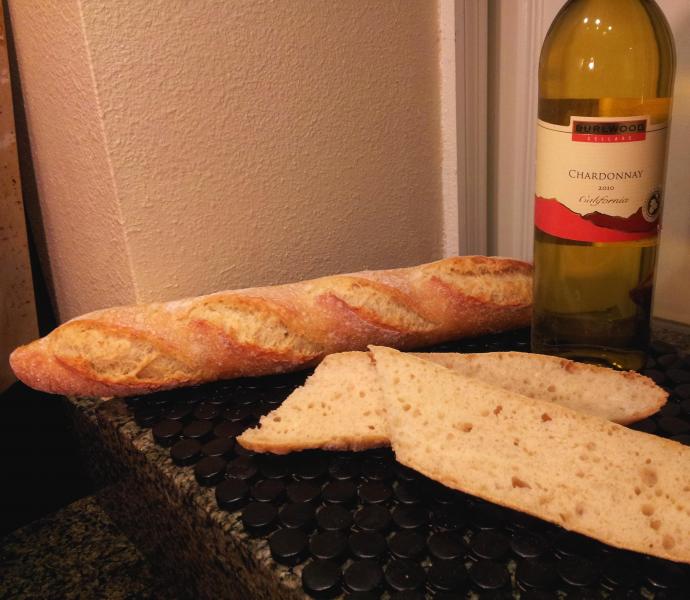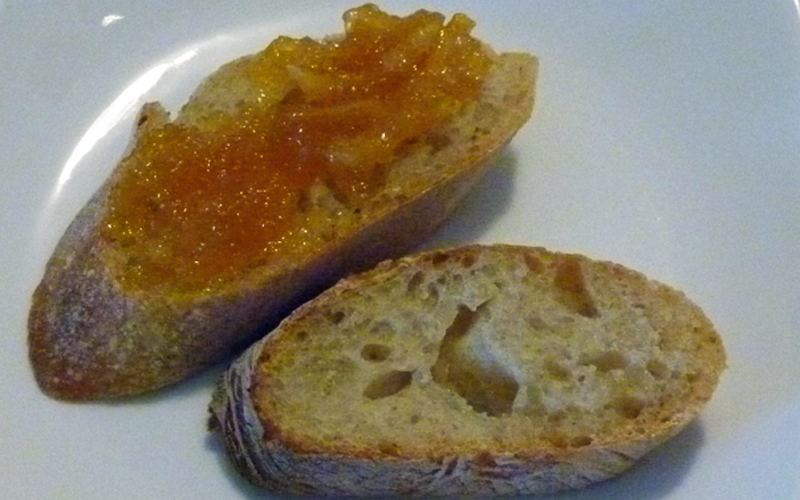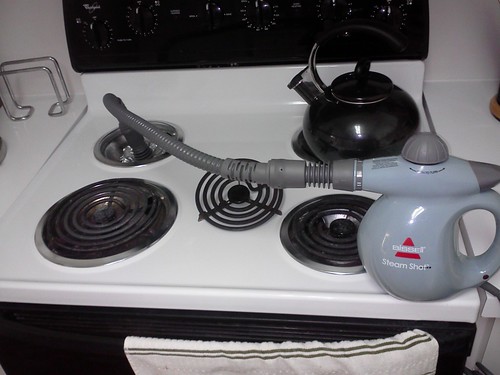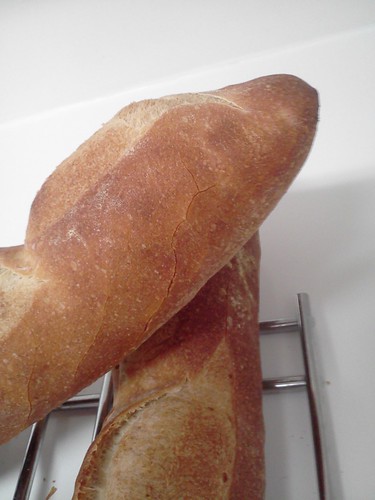With a lot of baguette dough and a home oven.
Lately I have been working with ever larger batches of dough. This is good training as it helps develop one’s eye in terms of dividing, does a little hand skill training on wrangling a larger volume, and because I have a tiny kitchen, ups the bar on mise en place and other organizational skills.
And while I am not in training for the Coupe du Monde (because I am too old, and frankly I don’t bake that well) – I continue to be very inspired by my two opportunities to attend and have decided to consider the judging criteria as I strive to improve my baking. Baking to a schedule is part of that – and while the phrase “watch the dough not the clock” is good advice for most home bakers – inspired by the fact that the 2008 Team USA didn’t place because they finished late (geeez) I am practicing how to control dough temperatures and conditions so that I can hold to a schedule.
But then there’s that home oven. I always knew that oven capacity is the big factor in getting bread out the door – but a commercial oven would simply not fit my space and to be honest, would not be a good investment in a state where there is only a remote possibility that someday I could operate a bakery from my home.
I’ve tried retarding the dough after pe-shaping and was not best pleased with how the dough felt during shaping. Additionally, my ever growing group of bread testers is beginning to want a little variety. So my challenge is to get decent loaves when I need to bake in shifts.
So after whomping up a large batch of my “bearguette” dough, I set myself to dividing up the dough.
Recently I had a little incident with wildlife in my home that required that I empty out and disinfect everything in my basement. It’s an ill wind that blows no one any good, and indeed this exercise revealed that I have a large number of round cake pans inherited from my grandmother. I knew in my heart that I had them – it just never came to front of mind.
I can load three pans at a time into my oven, so I gave my pans (6 total) a very generous coating of olive oil and sprinkled on a combination of dried herbs (oh, about 8-9 ounces of dough per 8 inch pan). Dough was shaped into rounds placed in the pan “good “ side down and after a few minutes flipped to good side up. This action coats the dough with olive oil and while there is no fat in the dough, the general taste and mouth feel is that of an enriched dough. (and then there are those herbs…) This shaping is the least sensitive to over proofing and so is put somewhere cozy for as long as it takes to get the rest of the bread proofed and done.
I’ve still got a lot of call for standard baguettes so a good bit of the dough is divided with that intent.
Again, lately, though I’ve been considering how I would create a” baguette fantasie.”
In the actual competition, these are baguettes that must be shaped by machine (to demonstrate that the baker has the skill to create dough that would withstand machine shaping) and then cut and shaped to form various fantastical patterns. I’ve pulled some oddly cut lumps from my oven. Oh sure, they look good when loaded, but oven spring takes its toll on some of that cutting. I begin to understand why some classic shapes are, indeed, classic – they work. I’ve also had some horrible loading accidents, since I continue to hold to the belief that parchment paper is cheating (for me, at least) and a beautifully cut shape can get – oh, shall we say “distorted” if the peel is not rendered completely non-stick. (Oh, for a loader!)
Also, I’ve been working on traditional regional French shapes. I had quite a good run on Auvernats (and, of course, me being me took no pictures) and have gone on to some other shapes – providing I can do them quickly enough.
So, baguettes loaded and baked, then the baguettes fantasie (which can handle slight over proofing a little better), then special shapes, and then my bread in the pans.
The bread in the cake pans is “dimpled” to give it the look of foccacia. I also take one pan and flatten out the middle and top with sauce and cheese to create a type of deep dish pizza. (Yes, yes, not completely traditional, but delicious with the good bread as a base, and the oil and herbs. Also a meal for the busy baker.)
I complete on schedule. The kitchen is clean and the couches are hung with care to dry. Having been assaulted by the smell of a moldy linen couche (not in my home, but elsewhere), I am even more meticulous about this than before. It’s a satisfying feeling. All that is left is to bundle up the bread for my various “customers.” When I was in Okinawa I learned how to tie a square piece of cloth (called a furoshki) into various carrying containers and have used my vast collection of flour sack towels to be the transport for these loaves. The fabric allows enough ventilation to keep the loaves crisp and the recipients can store the loaves in the bags for a day or so. I have a friend who has become the self appointed “bread fairy” for a number of folks who will come at her phone call to get their weekly bread allotment. (And you all get the destination to which this will lead…)
All this baking leaves little time for photography – even if I liked doing photography or was any good at it – but this week the special shapes came out well – so they were worth a snap. They are left to right – a baguette fantasie, an epi de ble, and a torsade.

The torsade was proofed “good side” down on linen that had been coated with “remoullage.” Remoullage is bran pulled from the milling process and re-milled until it is as fine as flour. It makes a lovely coating on the surface of the bread rather than just dusting with flour and has almost better non stick properties than white flour.
So that’s what I do with all that dough. It’s one mix, but a variety of products. My testers are completely sure that I have made at least three different breads. I just smile and say thank you.
People get grabby over the herb bread and it really is a low maintenance addition to a batch of baguettes – I highly recommend it.
